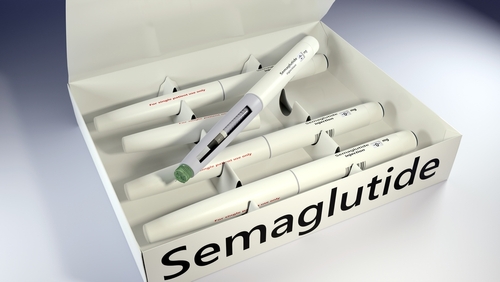
Semaglutide, a glucagon-like peptide 1 receptor agonist, is approved as a treatment for patients with type 2 diabetes and CKD. The treatment reduces albuminuria and the risk of kidney failure in this patient population.
During an oral session at ASN Kidney Week 2024, Hiddo Jan L. Heerspink, PhD, and colleagues presented results of a study designed to examine the effects of semaglutide in patients with overweight/obesity and albuminuria CKD without diabetes. The session was titled Effects of Semaglutide on Kidney Parameters in Patients With Obesity and Nondiabetic CKD.
The multicenter, randomized, placebo-controlled trial included adults with CKD (defined as eGFR ≥25 mL/min/1.73 m2 and UACR ≥30 and <3500 mg/g). Eligible participants had a body mass index of ≥27 kg/m2 and hemoglobin A1c <6.5%, with no use of hypoglycemic agents.
Patients were randomized to receive 24 weeks of treatment with subcutaneous semaglutide 2.4 mg per week or placebo, in combination with renin-angiotensin-system inhibition when indicated. The primary endpoint was change from baseline in UACR at week 24. Secondary endpoints included change in iohexol measured GFR (mGFR), eGFR, body weight, and systolic blood pressure. Throughout the study period, participants were monitored for safety measures.
A total of 125 patients were screened for study participation. Of them, 101 were randomized to either the semaglutide or placebo group. Mean age of the overall cohort was 55.8 years, 39.6% (n=40) were female, median UACR was 251 mg/d, and median eGFR was 65.0 mL/min/1.73 m2. The most common CKD etiologies were chronic glomerulonephritis (n=25) and hypertensive CKD (n=27).
At week 24, the placebo-corrected geometric mean change from baseline in UACR in the semaglutide group was –52.1% (95% CI, –65.2- to –34.1; P<.0001). The change in mGFR at week 24 was –1.9 mL/min/1.73 m2 (95% CI, –8.0 to 4.3) in the semaglutide group compared to the placebo group. Corresponding changes in eGFR-creatinine and eGFR-cystatin C were –1.1 (95% CI, –4.8 to 2.6) and +2.1 mL/min/1.73 m2 (95% CI, –1.7 to 5.9), respectively.
Compared to placebo, semaglutide changed body weight by –9.1 kg (95% CI, –11.1 to –7.1) and systolic blood pressure by –6.3 mmHg (95% CI, –11.1 to –1.5). More patients in the semaglutide group reported gastrointestinal events than patients in the placebo group (30 vs 15, respectively).
In conclusion, the researchers said, “Treatment with semaglutide for 24 weeks in patients with overweight/obesity and CKD without diabetes resulted in a robust and clinically meaningful reduction in UACR. These results support further trials to assess long-term efficacy and safety of semaglutide in these patients.”
Source: Heerspink HJL, Apperloo EM, Jongs N, et al. Effects of semaglutide on kidney parameters in patients with obesity and nondiabetic CKD. FR-OR102. Abstract of an oral presentation at the American Society of Nephrology Kidney Week 2024; October 25, 2024; San Diego, California. Funding for the study was provided by Novo Nordisk.







 © 2025 Mashup Media, LLC, a Formedics Property. All Rights Reserved.
© 2025 Mashup Media, LLC, a Formedics Property. All Rights Reserved.